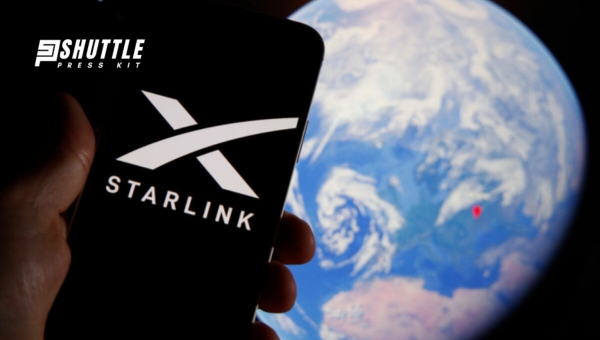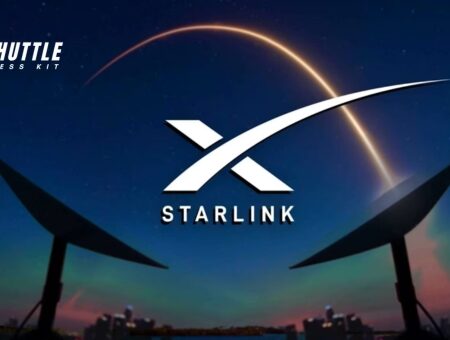Have you ever wondered about the limits on your internet? Specifically, I’m talking about Starlink Data Caps. These are the unseen boundaries that could change how we use the web. It’s something worth paying close attention to, especially if you, like me, rely on a steady and fast online connection for work or play.
So, do these data caps exist? As for now, Starlink hasn’t put any strict limits—known as data caps—on how much internet you can use each month. This means that customers can enjoy high-speed satellite internet without worrying about hitting a ceiling that would slow them down or cost extra. It’s a breath of fresh air in an online world where many service providers restrict usage with these caps.
Getting Real About Starlink Data Caps
When it comes to internet usage, one term that often pops up and rattles users is “data caps”. They can bring about a rain check on your uber-speedy downloads and endless live streaming.

But what exactly are they? And more importantly, where does the pioneering company of space-internet connectivity, Starlink, stand on the issue of data caps?
What Are Data Caps?
Simply put, a data cap is a limit set by internet service providers (ISPs) on how much data you can use in a particular period, usually in one month. Crossing this limit may lead to extra charges or even throttling of your internet speed.
Does Starlink has Data Caps?
Starlink, SpaceX’s satellite internet service, doesn’t implement traditional data caps for its customers. This approach allows users to engage in high data consumption activities like streaming, online gaming, and downloading large files without worrying about hitting a limit and incurring extra fees or throttled speeds.
This unlimited data usage policy is particularly appealing in the modern digital age, where such activities are commonplace.
However, Starlink has introduced a form of network management during peak congestion times, where users consuming excessive amounts of data might experience temporary speed reductions.
This measure is designed to ensure a stable and fair service quality across its user base, particularly during high-demand periods. While Starlink doesn’t have hard data caps, this prioritization policy acts to moderate the network’s performance for everyone.
Also Read: Starlink Warranty And Claim Guide: Easy Steps Revealed
Starlink Data Tiers
Starlink, the satellite internet service by SpaceX, offers different data tiers to cater to a variety of user needs, ranging from casual browsing to business-critical operations and emergency services. These tiers define the speed priority and data allocation for users based on their chosen plan. Here’s an overview of these data tiers:
- Tier 1 – Mobile Priority: Reserved for urgent scenarios, this tier provides the highest data priority for critical situations like emergencies at sea or in remote locations.
- Tier 2 – Priority: This is designed for business and standard plan subscribers who require faster internet speeds with higher priority on the network compared to other customers within the same vicinity.
- Tier 3 – Standard: The default unlimited data option offered in both Standard and Business plans that users revert to once they exhaust their Priority Data.
- Tier 4 – Mobile: The basic unlimited tier for roaming customers which offers lower priority compared to other tiers but still enables connectivity across different areas.
Potential Future With Starlink Data Caps And Fair Use Policy
As we pivot into an era marked by extensive internet consumption, the subject of data caps and fair use policies gains unprecedented relevance.

The future landscape of internet usage could very well be dictated by potential evolutions in these areas.
Analyzing Trends And Consumer Reports
What is intriguing about the field of Internet services is how consumer demands often influence policy changes. Let’s take a look at this from a dual perspective:
- Usage Statistics – Internet usage has spiked, particularly in our current digital age, where both work and entertainment are primarily online-centric. A surge in streaming media and teleconferencing due to home offices becoming ‘the new norm’ has only exacerbated this trend.
- Market Analyses – Industries have had to adapt rapidly to meet these growing needs, which likely will impact plans offered by ISPs like Starlink. More consumers are seeking unlimited data plans without restrictions or excessive charges.
Also Read: How to Access Starlink Router Settings? – Easy Guide
Frequently Asked Questions
What does the term ‘data cap’ mean?
A data cap is a limit that a network provider places on the amount of data you can use during your billing cycle.
Does Starlink currently have any data caps?
As of now, Starlink hasn’t implemented any data caps for its users.
Can my internet speed be affected by my usage with Starlink?
While there are no official data limits, excessive usage might potentially slow down connection speeds during times of peak demand.
If launched, could I entirely avoid a data cap with a business plan from Starlink?
It’s not easy to answer as it would depend on the specific policy changes made by Starlink at that time.
Are there additional charges if I exceed allotted amounts under future policies involving caps or limited plans?
Any additional charges would be determined based on what kind of policy changes are adopted by the company in future.
Conclusion
The domain of Internet services is incessantly dynamic, shaped by an interplay of technological advancements and user demands. As users of these services, understanding elements like Starlink data caps and Data Types becomes crucial in the optimization of internet usage.
The concept might seem complex, but breaking it down to comprehend its nuances helps us make informed judgments about considering an ISP like Starlink.
Policymakers continue to navigate through this fluid landscape, catering to consumer needs, towering user statistics, and regulatory constraints. One should always pay attention to these changes as they can have a substantial impact on your day-to-day browsing experience.
